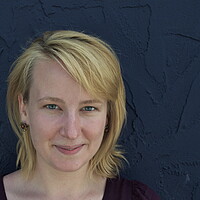Pilot in Asiana crash was 'very concerned' about routine landing
Loading...
The Asiana airlines pilots who crashed a Boeing 777 in July at San Francisco International Airport were aware that the plane was flying too low and lacked the speed necessary for a smooth landing but were unable to fix the error in time, according to a report released Wednesday.
Lee Kang Kuk, the pilot-in-training who was learning to land the big jet, told investigators he thought the autothrottle, a device which aids in landing, was “always working,” when in fact, it was not, said the reported from the National Transportation Safety Board (NTSB). Mr. Lee and the other pilots in the cockpit realized this seconds before the accident.
The resulting low, slow landing – the plane was supposed to go 137 knots but its speed fell to only 103 knots – caused the plane to hit the seawall, and crash.
"The trainee captain was asked how confident he felt about his knowledge of the [Boeing] 777 autoflight system just prior to the accident," the report said. "He stated he was not so confident because he felt he should study more."
The July 6 accident was the first time that Lee had attempted to land at San Francisco airport, and the novice pilot had clocked just 33 hours flying the 777, though he had spent nearly 10,000 hours on a variety of other jets, the report indicated. Another pilot, Lee Jeong Min, had spent 3,200 hours flying 777s.
At the time of the crash, there was also one other pilot in the cockpit, according to the investigation.
This 45-page report was released in conjunction with the beginning of the NTSB’s hearings into the crash. The hearing will not assign blame; rather, it will try to understand exactly how the crash happened.
Lee Kang Kuk told investigators he was stressed out and “very concerned” about attempting a visual approach in landing because the runway’s automatic warning systems were out of service due to construction, the report stated. On visual approach, a pilot lands the plane based on visual cues; on an instrument approach, the tower provides much more help. Lee's unfamiliarity with the 777 and the airport likely contributed to his unease about a visual approach.
The Asiana Airlines Flight 214 flew from Incheon, South Korea, with 307 passengers on board. There were three fatalities, and 181 injuries were reported. More than half of the passengers on flight 214 were Chinese citizens who took a flight from Shanghai to Incheon, a trans-Pacific flight hub.
The plane's tail and landing gear struck the seawall at San Francisco airport, sending the plane spinning. An oil tank then erupted and leaked fuel onto the plane's engine, starting a fire.
One passenger who was reportedly alive at the time of the crash was run over by a fire truck in rescue efforts.
After the crash, Asiana Airlines said it would sue the Oakland, Calif.-based TV station KTVU for falling victim to a hoax and reporting bogus and culturally offensive pilot names. Asiana has since dropped the lawsuit.
Asiana is offering $10,000 to each of the surviving passengers, which the airline says is not a settlement and does not prevent passengers from suing the airline.
Attorneys representing more than 60 of the crash victims suing the airline and Boeing plan to attend the NTSB hearing. The hearing was scheduled to start Tuesday and to run for two days, but it was postponed because of wintry weather in Washington.
This was the first fatal crash in the US since a crash near Buffalo, N.Y., in 2009.
• Reporting from the Associated Press was used in this report.








